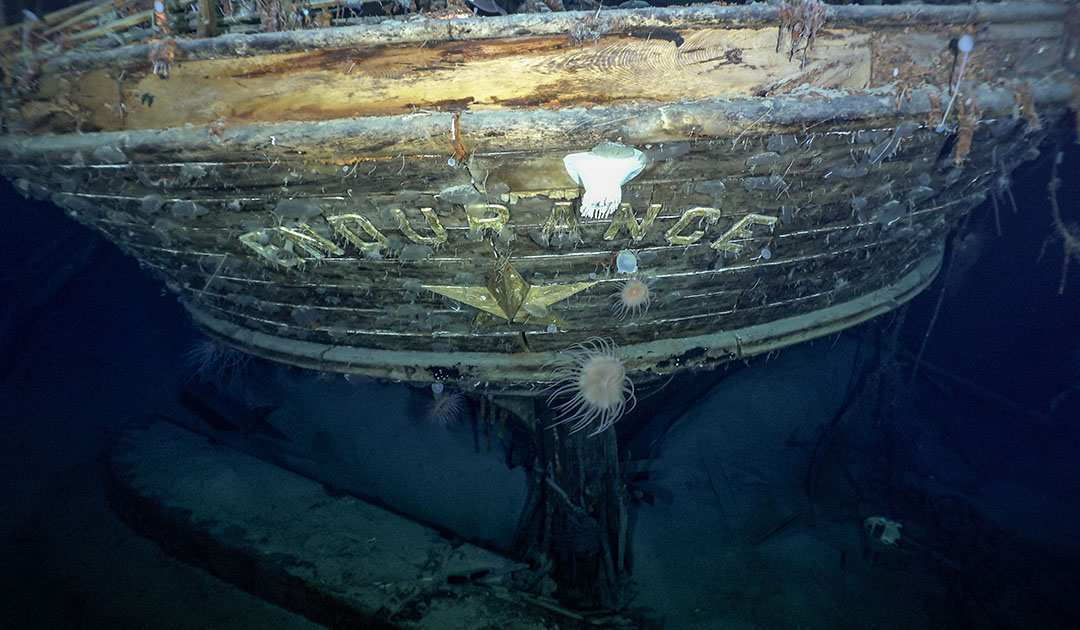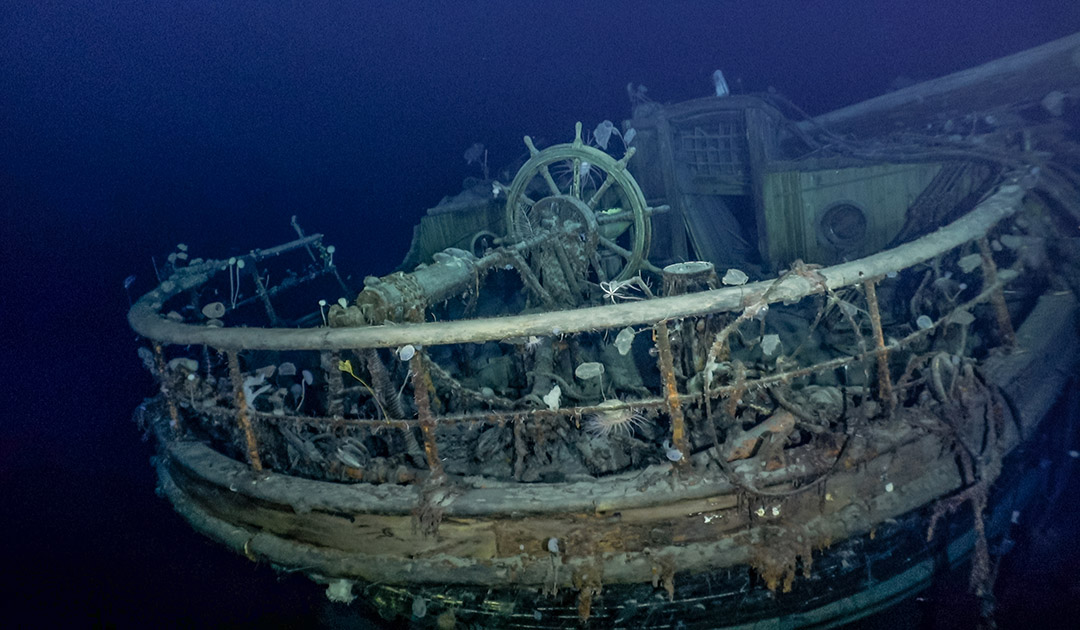
After weeks of searching, the team of the “Endurance22” expedition has achieved a sensation: They found the lost ship Endurance of the great polar explorer Sir Ernest Shackleton at a depth of about 3,000 meters in the Weddell Sea. The ship sank during Shackleton’s “Imperial Trans-Antarctic Expedition” in 1915 after being crushed by pack ice.
With the expedition drawing to a close, the team reached its goal of finding the Endurance. One hundred years after Shackleton’s death, the international team of scientists and media representatives from the United Kingdom, South Africa, Germany, France, the United States and other countries discovered the wreck within the previously defined search area in the Weddell Sea, about four miles south of the position originally recorded by Captain Worsley.
The team is using the South African research icebreaker S.A. Agulhas II as a platform for the search. As a historical site and monument, the wreck of the “Endurance” is protected under the Antarctic Treaty and may not be disturbed or touched in any way during the exploration and filming work. Accordingly, the pilots of the remote-controlled underwater vehicles must proceed with caution.
Mensun Bound, the director of exploration on the expedition, was delighted with their discovery: “We are overwhelmed by our good fortune in having located and captured images of Endurance. This is by far the finest wooden shipwreck I have ever seen. It is upright, well proud of the seabed, intact, and in a brilliant state of preservation. You can even see “Endurance” arced across the stern, directly below the taffrail. This is a milestone in polar history. However, it is not all about the past; we are bringing the story of Shackleton and Endurance to new audiences, and to the next generation, who will be entrusted with the essential safeguarding of our polar regions and our planet. We hope our discovery will engage young people and inspire them with the pioneering spirit, courage and fortitude of those who sailed Endurance to Antarctica. We pay tribute to the navigational skills of Captain Frank Worsley, the captain of the Endurance, whose detailed records were invaluable in our quest to locate the wreck. I would like to thank my colleagues at the Falklands Maritime Heritage Trust for enabling this extraordinary expedition to take place, as well as Saab for their technology, and the whole team of dedicated experts who have been involved in this monumental discovery.”

Dr John Shears, the expedition leader, added: “The Endurance22 expedition has reached its goal. We have made polar history with the discovery of Endurance, and successfully completed the world’s most challenging shipwreck search. In addition, we have undertaken important scientific research in a part of the world that directly affects the global climate and environment. We have also conducted an unprecedented educational outreach programme, with live broadcasting from on board, allowing new generations from around the world to engage with Endurance22 and become inspired by the amazing stories of polar exploration, and what human beings can achieve and the obstacles they can overcome when they work together. We will shortly begin our return leg to Cape Town, after an expedition which it has been my great privilege and honour to lead. The Expedition team, and the officers and crew of the S.A. Agulhas II, have been simply outstanding. I would also like to say thank you to the Falklands Maritime Heritage Trust, and all of our partners, especially in South Africa, who have played a vital role in the success of the expedition.”

In parallel with the search for the wreck, scientists from various disciplines studied ice drifts, weather conditions in the Weddell Sea and sea ice thickness, while also mapping sea ice from space, all important research to better understand climate change. Representatives from the South African Meteorological Service, the German company Drift & Noise, the German Alfred Wegener Institute, the German Aerospace Center (DLR), Finland’s Aalto University and South Africa’s Stellenbosch University were involved.
The expedition was documented by History Hit and the media network Little Dot Studios, which shared their content with the world on social media channels. The team also shot a long documentary film about the expedition, which will be broadcast by National Geographic this fall.
Julia Hager, PolarJournal
Link to the Endurance22 expedition website: endurance22.org
Link to History Hit: https://www.historyhit.com/
More on the subject:






Congratulations to all involved.